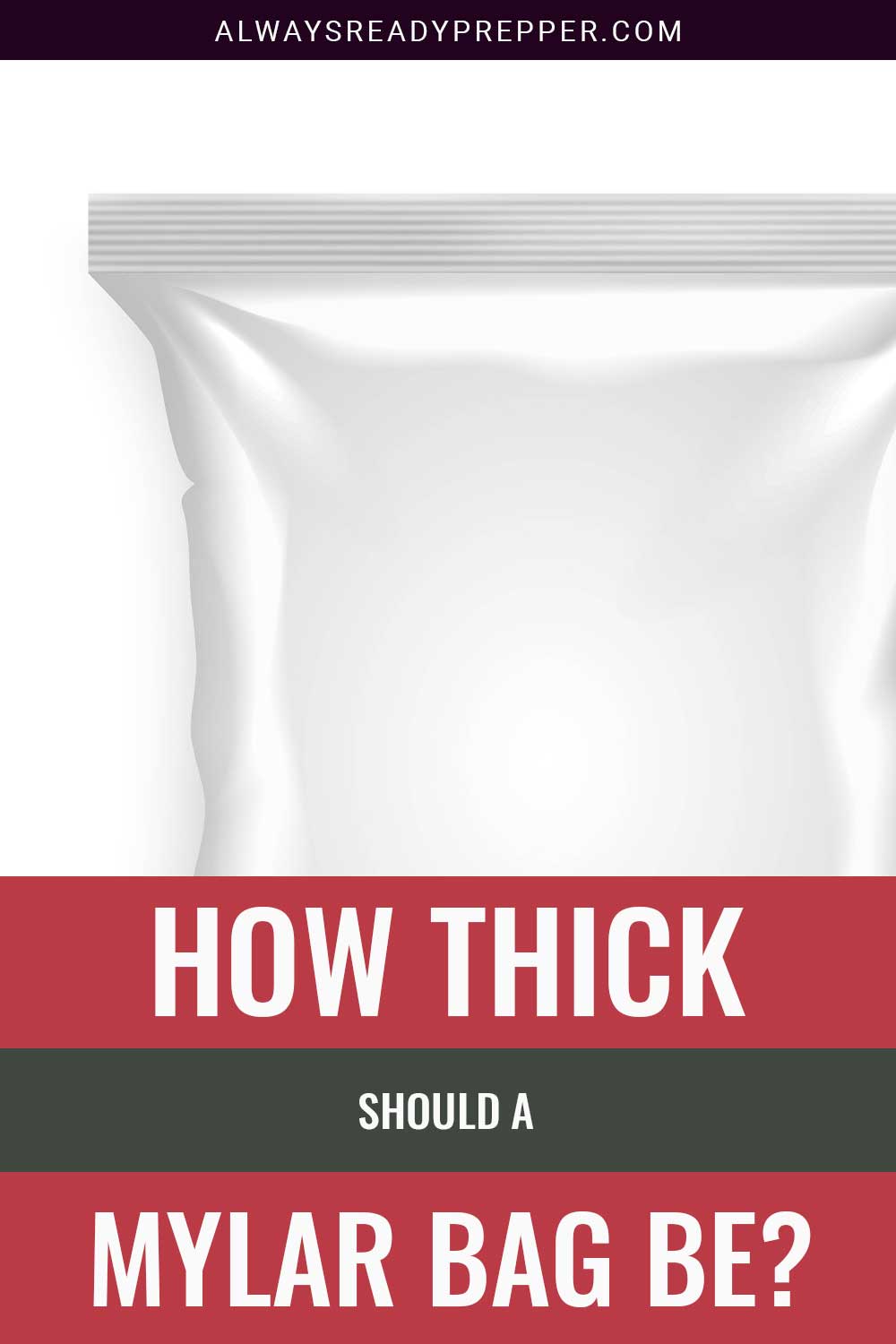How Thick Should A Mylar Bag Be?
We may earn commissions for purchases made through links on our site. Learn more on our about us page.
There are going to be different needs when it comes to the Mylar bag, and this will mean the versatile container comes in different sizes and shapes but also will have different thicknesses of materials.
If you are looking for a Mylar with a thin transparent membrane to show the product inside, there will be options for the shelf product.
Otherwise, the Mylar bags will need to be over four-point-five mils in thickness to provide comparable moisture and UV light protection but also be tough enough to resist puncture. For optimal protection, use thicknesses between five and seven miles.

What is the Thickness of Mylar?
Mylar is a customizable material that comes in various different thicknesses. As mentioned before, the optimal sizes will be between five and seven miles. However, that does not mean that thinner options are not available.
In general, the mylar bag thicknesses can get as thin as two mils, but just as a reminder, anything under four-point-five mils will not provide the Mylar bag’s reputed protection against the elements.
For those wondering what a Mil is, aka a Thou, it is a common engineering and manufacturing term used in non-metric measurements for a thousandth of an inch or radian.
What is the Difference in Thickness in Mylar bags?
The thicker Mylar bags will be more opaque, blocking out UV rays and other sunlight protons but also providing a barrier between the temperature outside, making them fantastic choices for grains and other dry goods.
As you get on the thinner side of the Mylar bags, you will find that the materials become more transparent, making these the better options for snacking foods and quick-sell items.
As a side tip of information, when it comes to odor containment, think thicker Mylar bags, and the thickest that is available currently will be seven-point-five mils.
Why Does Mylar Bag Thickness Matter?
The main reason you will be concerned about the thickness of the mylar bag material is the protection ratings against the elements.
Thinner Mylar will be better for shelved items or store-sold items and non-perishable foods that will be used quickly and are meant to be sold quickly.
Thicker Mylar bags will be for the long-term storage of dry goods, foods, and other mixtures that will need to be contained for possibly years at a time. The thicker units will have protection abilities against contamination, moisture, puncture damage, and UV rays.
What is the Best Mil Thickness for Mylar bags?
As mentioned earlier in the article, Mylar materials’ thickness to provide the best optimal protections and storage abilities will be in the five to seven-point-five mils range.
When you get up to the gallon-sized bags, it would be smart to have thicker materials to help avoid punctures and wasting all that Mylar.
Smaller bags will have durability, no matter the thickness, making small thin bags perfect for outdoor snacking options for backpackers, for example. The most popular bought thickness of Mylar bags purchased will be the three-point-five mil thick materials.
How Can You Decide Which One Works Best for You?
The most effective way to test this will be through a scientific method or simply a trial and error.
Otherwise, experts and experienced folks have been using Mylar for years. When they are available, consulting these business minds can get you inside scoops on the information you need.
Think about it like this, if you are trying to sell a product and it is a fast-moving one, use the popular three-point-five mil bags for a cost-effective option.
If you are looking to store something for a longer period, go thicker than five miles to get the best protections that Mylar material can offer.
Final Thoughts on How Thick Should a Mylar Bag be
Mylar bags are a universal item that can be used in all industries and provide exactly what the seller needs, but also the preppers needed to keep their dry food safe.
When it comes to the thickness of the materials, think cost-effective for the fast-moving items and go thin – when you need to store your dry goods for the long term, go thicker than five mils.
If you are looking to package a product, talk with other business owners who have been using Mylar, get a hold of their producer, or learn to make your own bags for a ‘zero net cost’ production option.



Leave a Reply
You must be logged in to post a comment.